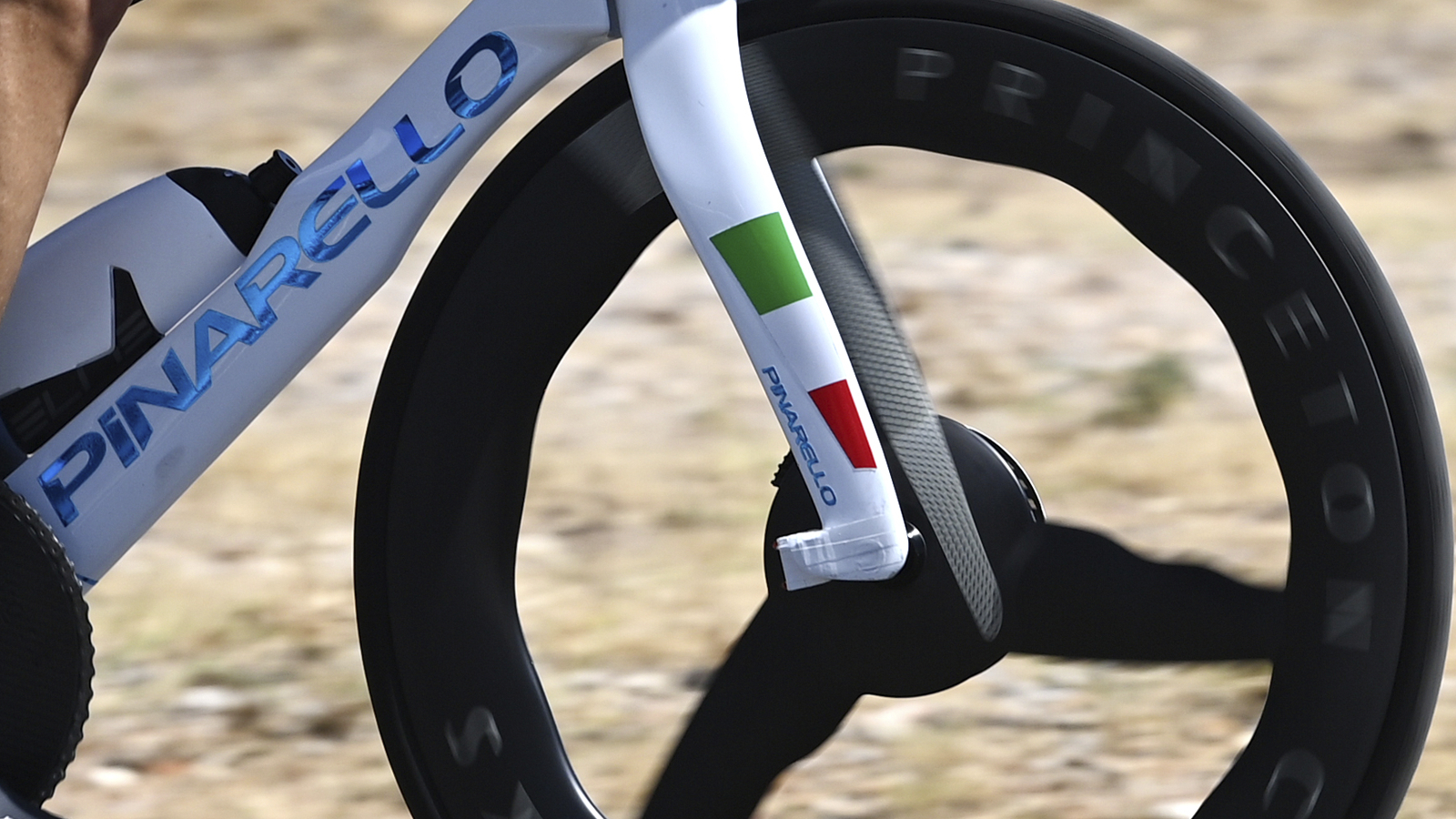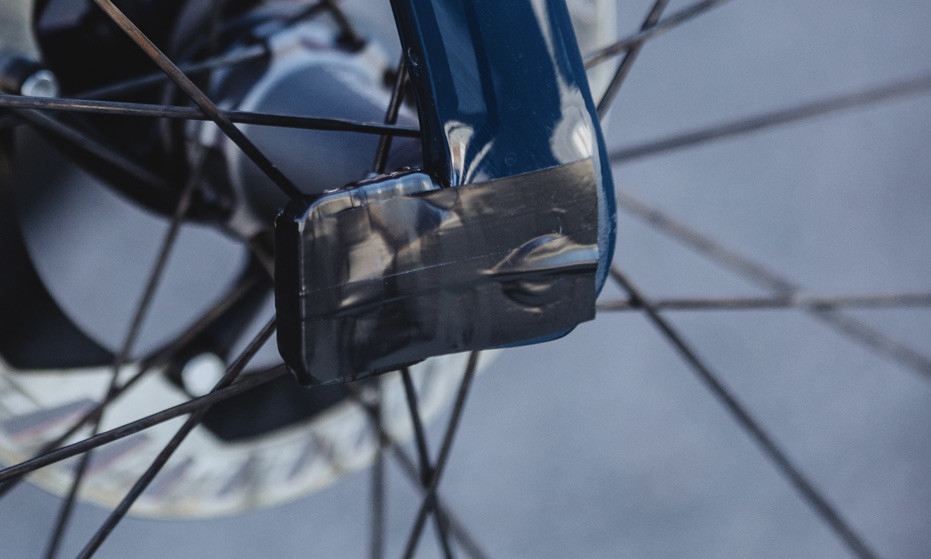Ineos Grenadiers reveal wattage saving of duct tape aero transponder hack
Track-inspired hack explained by team's Performance Engineer Dan Bigham

Ineos Grenadiers' Performance Engineer Dan Bigham has explained why his mechanics have duct taped the race transponder to the rear of the forks on their Pinarello Dogma F race bikes.
Earlier this week, Cyclingnews spotted the transponder's unusual position on the bike of Egan Bernal, speculating that it was likely the latest finding in the team's pursuit of marginal gains.
The 2cm square plastic timing chip is usually found on the outer face of the fork leg, often held in place with a zip tie, tape, or an offcut of a latex inner tube to smooth the airflow. But in this case, it was found duct taped to the rear of the fork's dropout, inside the small aero dropout fairing that Pinarello calls the Fork Flap.
Speaking exclusively to Cyclingnews' Alasdair Fotheringham at the start of the stage 10 time trial, Bigham confirmed our assumptions before revealing the details behind the hack.

"It does come down to aerodynamics, but also it’s just a nice clean place to put it," he began.
"You can place it anywhere on the fork, and obviously that’s part of the fork section,. So rather than sticking it out in the wind where the frontal area is increased, we just put it behind the fork ever so slightly.
"It's incredibly marginal when it comes down to it. If you measure a transponder, it’s probably 8mm wide by 20mm tall. You have a very small marginal area, but the coefficient of a transponder is pretty terrible, it’s just a block. Normally you just put it on, and most teams do that with a bit of latex or tape, but we just put it behind the fork."
Get The Leadout Newsletter
The latest race content, interviews, features, reviews and expert buying guides, direct to your inbox!
Ineos Grenadiers, in its original guise as Team Sky, coined the term 'marginal gains' with the philosophy that by paying attention to each of the small details, it would add up to make a big difference to performance. The latest gain is certainly small, as Bigham revealed the expected wattage saving from the hack.
"We’re talking points of a watt here, not even a [full] watt of saving in the grand scheme of things," he said.
The hack was also applied to Filippo Ganna's time trial bike for stage 10. This was still done using duct tape, but with a slightly cleaner finish and impressively, mechanics went the extra mile to colour-match the tape to Ganna's white frame.
Bigham last year broke the World Hour Record with a distance of 55.548km, just a month before guiding Ganna to an even greater distance of 56.792km. He has a long history of track riding, with numerous medals in the Individual and Team Pursuits, and it was there in the velodrome that his inspiration for the hack came from.
"There are teams on the track that do it at the moment. We tried to do it in the Hour Record, but how we implemented it with the fork, the UCI didn’t like it. They’ve clarified that area now, so there are a lot of bikes that are coming out on the track side that have that area integrated."

Josh is Associate Editor of Cyclingnews – leading our content on the best bikes, kit and the latest breaking tech stories from the pro peloton. He has been with us since the summer of 2019 and throughout that time he's covered everything from buyer's guides and deals to the latest tech news and reviews.
On the bike, Josh has been riding and racing for over 15 years. He started out racing cross country in his teens back when 26-inch wheels and triple chainsets were still mainstream, but he found favour in road racing in his early 20s, racing at a local and national level for Somerset-based Team Tor 2000. These days he rides indoors for convenience and fitness, and outdoors for fun on road, gravel, 'cross and cross-country bikes, the latter usually with his two dogs in tow.